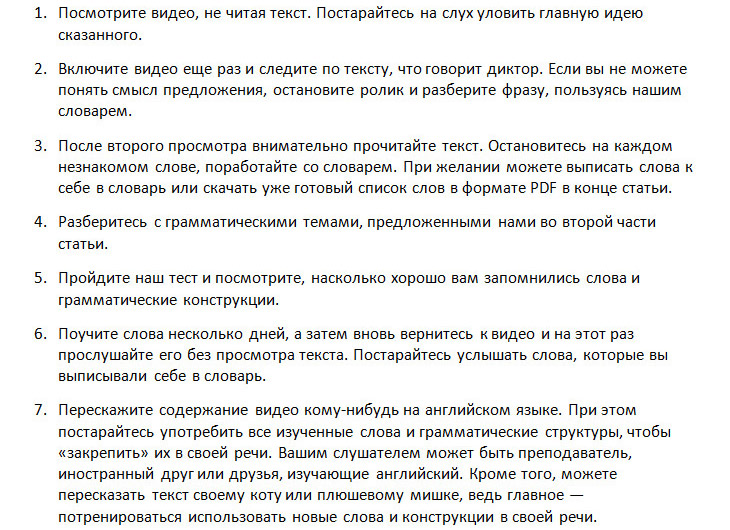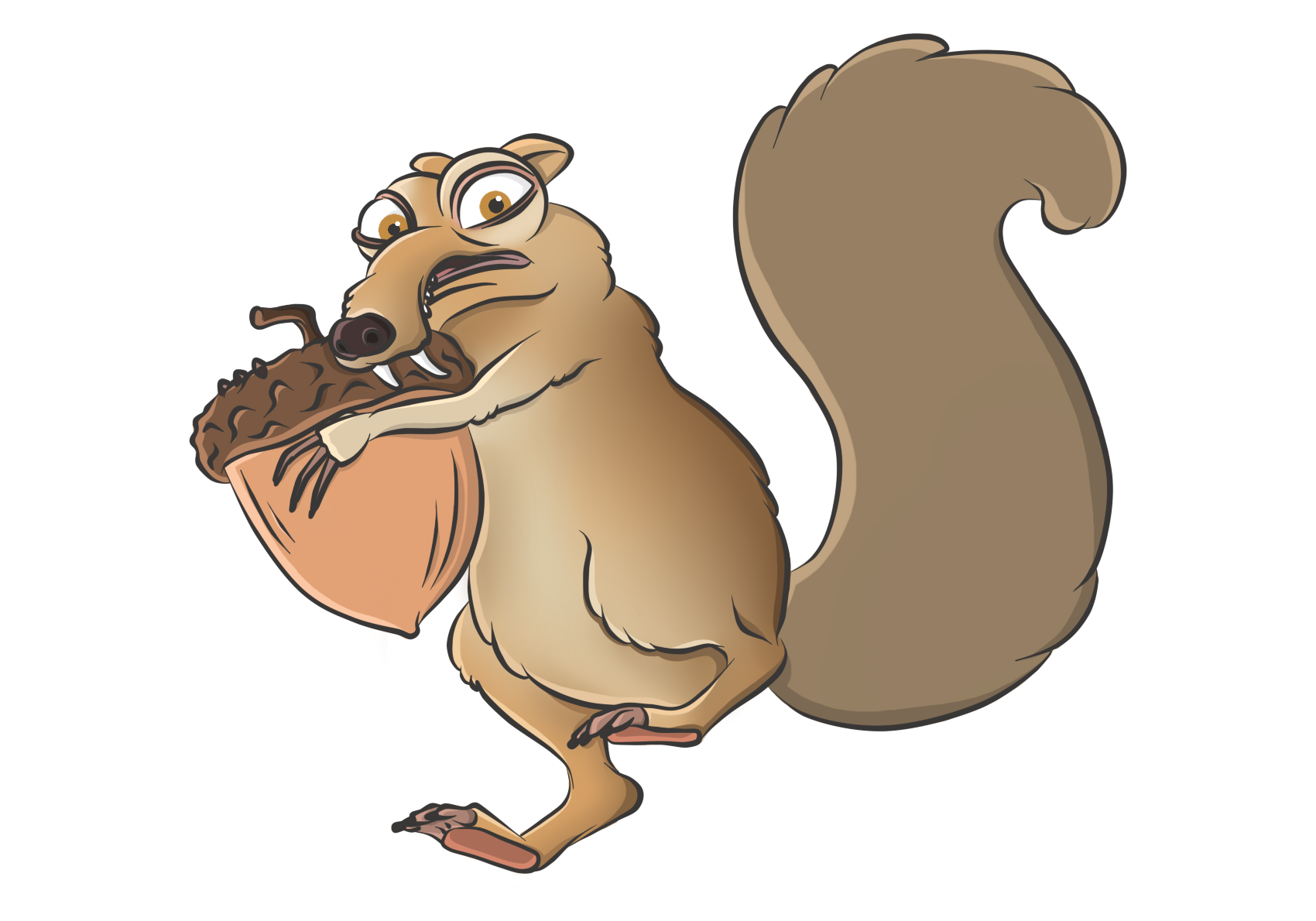
Все мы помним знаменитых ленивцев из мультфильмов: очаровательного Сида из «Ледникового периода» и забавного Блица из «Зверополиса», которого лис Ник приветствует дразнилкой Flash, Flash, hundred yard dash («Блиц, Блиц, скорость без границ»).
В начале декабря мы и сами немного похожи на ленивцев, когда холодным утром долго и с неохотой выбираемся из-под одеял. Но что же делает этих животных такими медлительными? Давайте узнаем из видео.
Материал рассчитан на уровень Intermediate и выше. Для того чтобы статья принесла вам максимальную пользу, предлагаем ознакомиться с инструкцией.

Видео: Why are sloths so slow? — Почему ленивцы такие медлительные?
| Текст | Словосочетания |
|---|---|
| In 1796, Thomas Jefferson received a box of bones he couldn't identify. A long, sharp claw reminded him of a lion, but the arm bones suggested a larger animal, one about three meters long. Thinking it might be huge unknown species of North American lion, Jefferson warned explorers Lewis and Clark to keep an eye out for this mysterious predator. | to receive — получать a bone — кость to identify — опознавать sharp — острый a claw /klɔː/ — коготь to remind somebody of something — напоминать кому-то что-то an arm (здесь) — лапа to suggest (здесь) — указывать на, подразумевать huge /hjuːdʒ/ — огромный, гигантский a species (plural: species) /ˈspiːʃiːz/ — вид (виды) to warn — предупреждать to keep an eye out for somebody/something — ожидать появления a predator — хищник |
| But Jefferson's box of bones didn't come from a lion. They came from an extinct giant sloth. Prehistoric ground sloths first appeared around 35 million years ago. Dozens of species lived across North, Central and South America, alongside other ancient creatures like mastodons and giant armadillos. | to come from — происходить от extinct — вымерший a sloth — ленивец prehistoric — доисторический a ground sloth — гигантский ленивец dozens — множество, масса alongside /əˌlɒŋˈsaɪd/ — наряду с an ancient creature — древнее существо a mastodon — мастодонт an armadillo /ˌɑː.məˈdɪl.əʊ/ — броненосец |
| Some ground sloths, like the megalonychid, were cat-sized, but many were massive. Jefferson's sloth, Megalonyx, weighed about a ton, and that was small compared to megatherium, which could reach six metric tons, as much as an elephant. They ambled through the forests and savannas using their strong arms and sharp claws to uproot plants and climb trees, grazing on grasses, leaves, and prehistoric avocados. In fact, we might not have avocados today if not for the giant sloths. Smaller animals couldn't swallow the avocado's huge seed, but the sloths could, and they spread avocado trees far and wide. | cat-sized — размером с кошку massive — огромный to weigh /weɪ/ — весить to reach — достигать a metric ton — метрическая тонна to amble — разгуливать a savanna — саванна to uproot — выкорчевывать to graze on — питаться, пастись to swallow — глотать a seed — семя far and wide — повсюду |
| Ground sloths flourished for millions of years, but around 10,000 years ago, they started disappearing along with the Western Hemisphere's other giant mammals. Researchers think that ground sloths could have been pushed out by an oncoming ice age, or competition with other species, maybe humans, who arrived in the region around the time most of the sloths went extinct. | to flourish (здесь) — господствовать along with — вместе с the Western Hemisphere — Западное полушарие a mammal — млекопитающее to push out — вытеснять oncoming — надвигающийся an ice age — ледниковый период competition (здесь) — борьба за существование to go extinct — вымирать |
| Some of the smaller sloths did survive and migrated to the treetops. Today, there are six species left living in the rainforest canopies of Central and South America. Hanging out in the trees is a good way to avoid predators, and there are plenty of leaves to eat. But this diet has its drawbacks. Animals extract energy from food and use that energy to move around, maintain their body temperature, keep their organs working, and all the other activities necessary for survival. | to survive — выживать to migrate — перебраться, переместиться a treetop — верхушка дерева rainforest canopies — тропические джунгли to hang out in the trees — висеть на деревьях to avoid — избегать a drawback — недостаток, минус to extract energy from — получать энергию из to maintain one's body temperature — поддерживать температуру тела survival — выживание |
| But leaves don't contain much energy, and that which they do have is tough to extract. Most herbivores supplement a leafy diet with higher energy foods like fruit and seeds. But sloths, especially three-toed sloths, rely on leaves almost exclusively. They've evolved finely tuned strategies for coping with this restricted diet. First, they extract as much energy from their food as possible. Sloths have a multi-chambered stomach that takes up a third of their body, and depending on the species, they can spend five to seven days, or even weeks, processing a meal. | to contain — содержать tough — трудный a herbivore /ˈhɜː.bɪ.vɔːr/ — травоядное животное to supplement — дополнять, добавлять a leafy diet — зеленая, лиственная диета three-toed — трехпалый to rely on something — зависеть exclusively — исключительно to evolve — развиваться finely tuned — хорошо отточенный to cope with — справляться a restricted diet — строгая диета a multi-chambered stomach /ˈstʌm.ək/ — желудок, состоящий из нескольких камер to take up — занимать (о пространстве) depending on — в зависимости to process a meal — перерабатывать пищу |
| The other piece of the puzzle is to use as little energy as possible. One way sloths do this is, of course, by not moving very much. They spend most of their time eating, resting, or sleeping. They descend from the canopy just once a week for a bathroom break. When sloths do move, it's not very fast. It would take a sloth about five minutes to cross an average neighborhood street. This unhurried approach to life means that sloths don't need very much muscle. In fact, they have about 30% less muscle mass than other animals their size. Sloths also use less energy to keep themselves warm because their body temperature can fluctuate by about five degrees Celsius, less than a cold-blooded reptile, but more than most mammals. These physical and behavioral adaptations minimize the sloth's energy expenditure, or metabolic rate. | a piece of the puzzle — часть головоломки, загадки to descend from something — спускаться с neighborhood — соседний unhurried — неспешный an approach to — подход muscle mass — мышечная масса to fluctuate (by) — колебаться в пределах a cold-blooded reptile — хладнокровная рептилия energy expenditure — расход энергии metabolic rate — скорость обмена веществ |
| Three-toed sloths have the slowest metabolism of any mammal. The giant panda is second slowest, and two-toed sloths come in third. Moving slowly has allowed sloths to thrive in their treetop habitat. But it's also made the sloths themselves a great habitat for other organisms, including algae, which provides a little extra camouflage, and maybe even a snack. Sloths may not be giant anymore, but that doesn't make them any less remarkable. | to thrive — процветать a habitat — среда обитания algae /ˈældʒiː/, /ˈæl.ɡiː/ — водоросли camouflage /ˈkæməflɑːʒ/ — маскировка a snack — закуска, перекус remarkable — впечатляющий, удивительный |
Ленивая грамматика
В этом видео примечательно употребление грамматических конструкций на сопоставление и противопоставление понятий и характеристик — от степеней сравнения прилагательных до слов-связок и скрытых сравнений.
1. Сравнительная и превосходная степени сравнения прилагательных
Прилагательные имеют две формы: сравнительную и превосходную. Для сравнения двух людей или предметов мы употребляем сравнительную степень и союз than (чем).
Односложные и двусложные прилагательные образуют сравнительную степень при помощи суффикса -er: bigger (больше), cooler (холоднее). Если слово заканчивается на согласный звук + гласную y, то используем суффикс -ier: prettier (более красивый).
Прилагательные с более чем двумя слогами образуют сравнительную степень при помощи слов more (более) и less (менее): more handsome (более красивый), less beautiful (менее красивый).
A long, sharp claw reminded him of a lion, but the arm bones suggested a larger animal. — Длинный, острый коготь был похож на львиный, но сама лапа принадлежала более крупному животному.
Smaller animals couldn't swallow the avocado's huge seed. — Животные меньшего размера не могли глотать огромные семена авокадо.
Most herbivores supplement a leafy diet with higher energy foods like fruit and seeds. — Большинство травоядных добавляют в свою лиственную диету более высококалорийную пищу, такую как фрукты и семена.
Sloths may not be giant anymore, but that doesn't make them any less remarkable. — Ленивцы уже давно не огромные животные, но это не делает их менее удивительными.
Для сравнения более двух людей или предметов, принадлежащих к одной и той же группе, мы используем артикль the, после него ставим превосходную степень прилагательного и предлог of/in при необходимости.
Односложные и двусложные прилагательные образуют превосходную степень при помощи суффиксов -est и -iest, а прилагательные с более чем двумя слогами образуют превосходную степень при помощи the most и the least: the most interesting (самый интересный), the least remarkable (наименее впечатляющий).
Three-toed sloths have the slowest metabolism of any mammal. — У трехпалых ленивцев самый медленный метаболизм среди млекопитающих.
Sloths are the most remarkable animals in the rainforest. — Ленивцы — самые удивительные животные в тропических джунглях.
2. Сравнительная конструкция as ... as
Эта конструкция используется для того, чтобы показать, что вещи или люди обладают одинаковыми качествами. Между словами as ... as (настолько ... насколько; такой же ... как) может находится не только прилагательное, но и наречие, а также существительное.
Megatherium could reach six metric tons, as much as an elephant. — Мегатерий мог достигать веса в 6 метрических тонн, так же, как слон.
First, they extract as much energy from their food as possible. — Во-первых, они получают из пищи настолько много энергии, насколько возможно.
The other piece of the puzzle is to use as little energy as possible. — Другая часть загадки — это использовать как можно меньше энергии.
3. Скрытое сравнение
Иногда необязательно использовать сравнительные конструкции, для того чтобы показать сравнения и противопоставления. Они бывают неявно выраженными:
Some ground sloths, like the megalonychid, were cat-sized. — Некоторые наземные гигантские ленивцы, например, двупалые ленивцы, были размером с кошку.
They have about 30% less muscle mass that other animals their size. — У них на 30% меньше мышечной массы, чем у других животных их размера (дословно — такого же размера, как и они).
4. Другие сравнительные конструкции
В видео встречаются три связующих элемента, которые используются для сопоставления понятий и явлений:
Dozens of species lived across North, Central and South America, alongside other ancient creatures. — Десятки видов обитали по всей Северной, Центральной и Южной Америке наряду с другими древними существами.
Around 10,000 years ago, ground sloths started disappearing along with the Western Hemisphere’s other giant mammals. — Около 10 000 лет назад наземные ленивцы начали исчезать, как и другие гигантские млекопитающие Западного полушария.
Megalonyx weighed about a ton, and that was small compared to Megatherium. — Мегалоникс весил около тонны, и этот вес был небольшим по сравнению с весом мегатерия.
Дополнительную информацию по теме ищите в статье «Фразы для сравнения и противопоставления».
Надеемся, что теория была полезной. А теперь давайте освежим в памяти все слова и словосочетания по этой теме, а также грамматические конструкции на сопоставление и противопоставление понятий. Для этого предлагаем вам пройти небольшой тест для повторения.
Теперь вы знаете, почему ленивцы такие ленивые, а также умеете сравнивать их с другими видами животных. Повторить новые слова можно с помощью таблицы в формате PDF.
Скачать список лексики по теме «Видеоразбор: каково быть ленивцем» (*.pdf, 238Кб)






